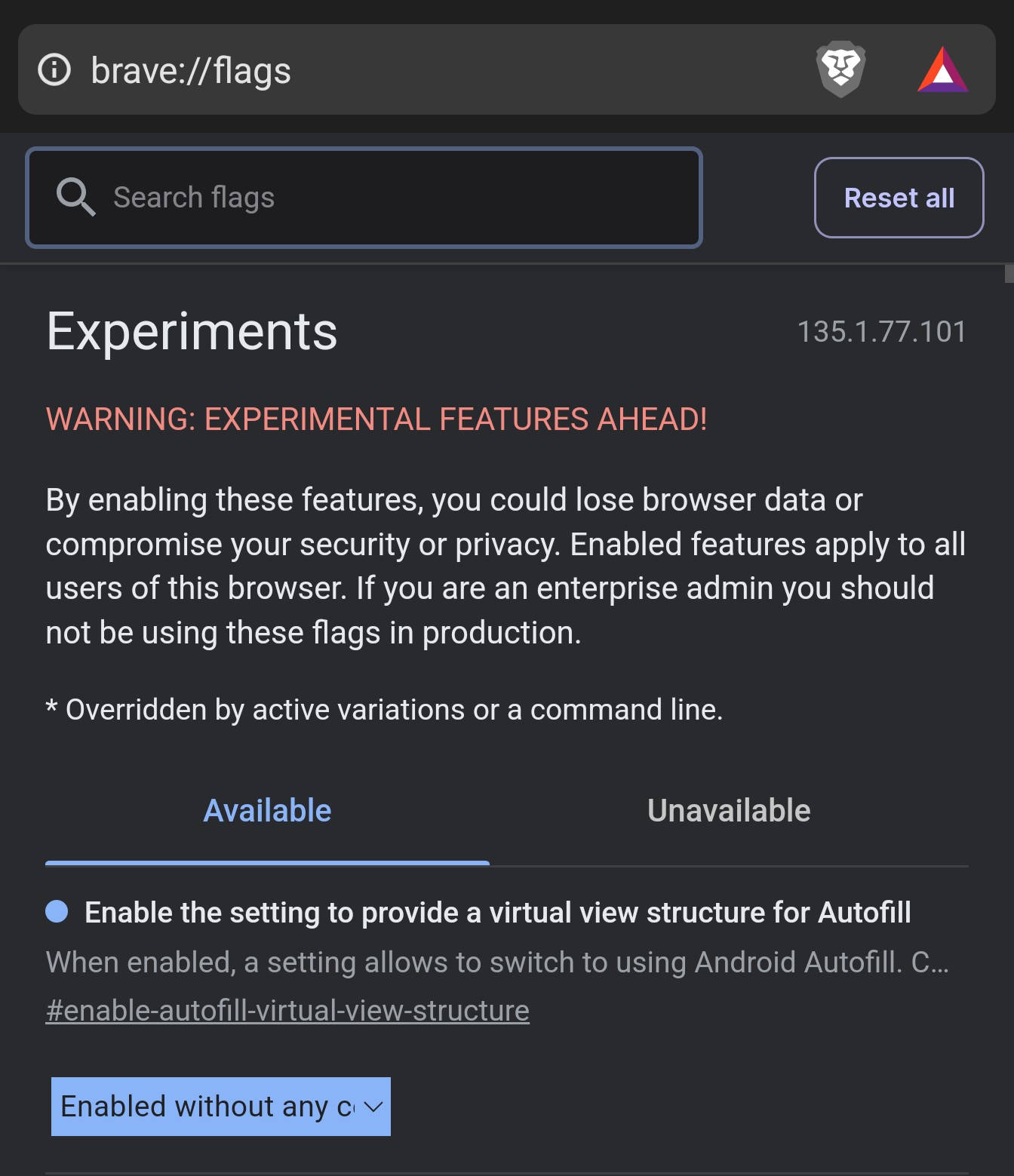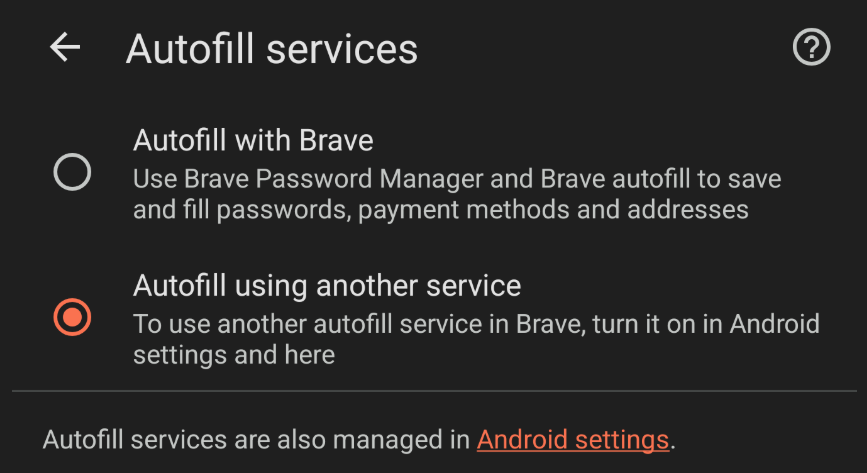Brave on Mobile, and Autofill Issues
Brave browser being my latest refuge from the various shenanigans of Firefox and Chrome, I have been setting it up recently. It seems to support end-to-end, zero-knowledge encryption for syncing browser history, bookmarks etc., but other that that and its built-in adblocking, it’s basically Firefox without the politics.
I’m also using GrapheneOS on mobile now, having removed the Android Open Source Project (AOSP) installation from a Google Pixel phone, and installed the GrapheneOS AOSP fork for better privacy and security.
My current password manager is 1Password, but I’m looking into switching to Proton Pass perhaps sometime soon.
The password manager autofill wasn’t working in Brave, but it was working everywhere else (Protonmail app etc.).
Brave Browser Autofill Settings to Change

The secret cheat codes to make Autofill work in Brave are at brave://flags
There is a secret cheat code to accessing more settings in Brave. On your Android or GrapheneOS device, navigate to the
URL brave://flags. From here, use the search settings to locate “Enable the setting to provide a virtual view
structure for Autofill”. There is no good reason why it is called this. There is also no good reason why you need to
enable a hidden feature flag to make password management functionality work.
Having found the setting, the correct value is “Enabled without any compatibility check”.
Having entered this cheat code, you can now navigate to the general settings in Brave, and get access to a secret option.

The Autofill Services settings are in the general settings on Brave
The option in the general settings is called “Autofill Services/Autofill using another service”.
Once you select this last radio button, Brave now allows 1Password to autofill your passwords for you on Android, the same way it does on a desktop browser.
